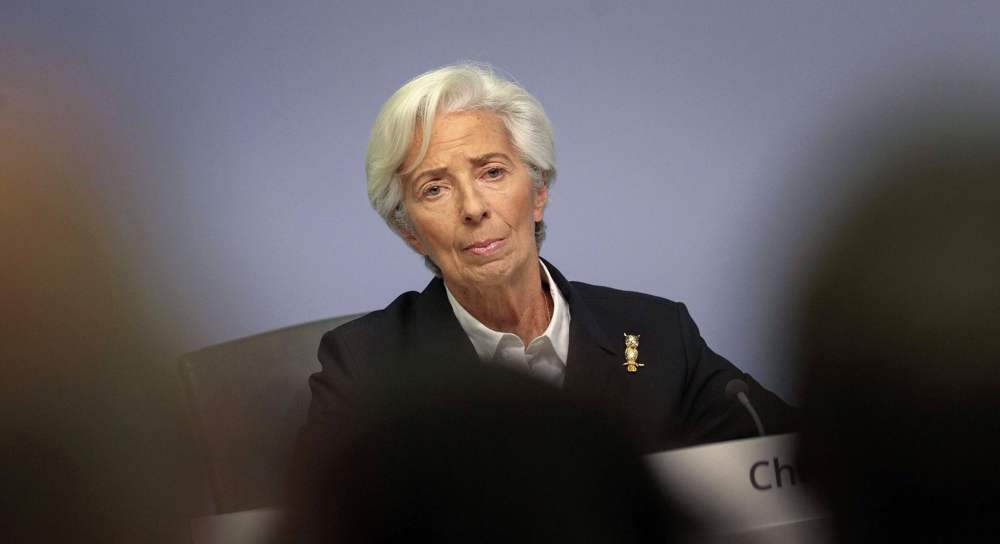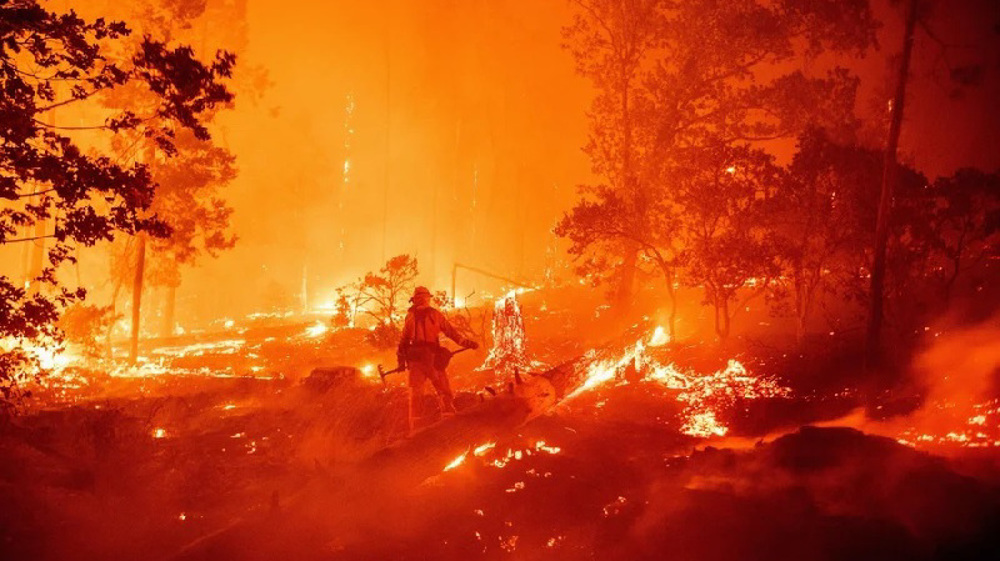COVID-19 compounds debt repayment dilemma
Many nations, with debt repayments due, are faced with a dilemma: pay their debts abroad or concentrate on solving COVID-19 crisis at home?
The unprecedented impact of COVID-19 has resulted in the tragic loss of life of over 1 million souls, yet, for many developing and Global South nations, a huge dilemma exists for which many believe the richer and Global North states are mostly to blame.
The dilemma
The dilemma poor nations are faced with is having to choose between paying back debts or providing much needed healthcare, something that major institutions, such as the IMF, have taken into consideration by asking the lending countries to ease the repayment plans in order for developing nations to concentrate their efforts on problems at home.
I want to finish with the gratitude to the G 20 for exceptionally rapid decision on debt relief for the poorest countries; it would release billions of dollars for them. And that is exactly what we need. Solidarity so we can come through this together.
Kristalina Georgieva, IMF Managing Director
Systemic corruption and mismanagement
Yet, there is a huge problem. In spite of the efforts of the lenders to ease repayments, however big or small that may be, there is the issue of how the money being saved is being spent, with allegations emerging that mismanagement and corruptions means the money is not reaching those whom it should be.
Let’s now take a look at some of the examples of why debt relief could help some of the nations in Africa, in particular when it comes to dealing with the ongoing medical crisis caused by the Coronavirus. Kenya for example, one of the more developed nations in Africa only has 130 intensive care beds for a population of 50 million people, raising the question as to just how bad things must be elsewhere across the continent.
Dire African Straits
A shortage of doctors is also a major problem for African nations, with Tanzania for example having just one doctor per 71,000 people, and Ghana having less than 15% of the number of doctors it needs, yet Ghana is currently paying debts of $36.3 million dollars per week, enough to pay salaries of an extra 1,500 doctors per year!
Taking it one stage further, and nurses are also in dire shortage across Africa, with the Democratic Republic of the Congo for example having half the number of nurses it requires, with the amount of debt being paid back in just four months of the year, enough to employ a further 141,000 nurses per year in the country, figures that I am sure you will all agree, are truly startling.
High interest rates and exploitation
There's no doubt that when it comes to any kind of debt, there's a major common denominator that determines it, namely one rich party will lend to a poor party on the condition of usually high interest rates and some kind of notion of set conditions to pay it back, which for the most part, often sees the party owing money rarely able to fully pay it back, and it's finding itself in a position to be exploited.
One of the most prominent examples of debt is seen in developing nations who have borrowed vast amounts of money from more developed countries, who in turn use the debt to exploit land, resources and people, into paying back the loans. Africa is of course one such place where such debt exists, but how then did African nations find themselves in such a position?
One point is that countries are encouraged to borrow; lenders exist, and they want to lend money. The big difference for African countries is whether the borrowing is from multilateral institutions like the World Bank or the IMF, or industrialised countries where it's concessional, or whether it's from the private sector.
Oliver Moririseey, Prof. Economic Development, University of Nottingham
How big a problem is debt repayment on a global scale?
In 2018, external debt accumulated to a staggering $457 billion dollars. In 2020 alone, the 76 poorest nations in the world are due to pay $40.6 billion dollars, leaving little room for the world’s poorest nations to concentrate any of their efforts on fighting and treating the Covid-19 pandemic.
When one looks at the statistics for Africa, the figures are truly worrying for the nations with external debts, doubling on average across the continent, from 5.9% in 2015, up to 11.8% and rising currently.
Of this debt around 20% of total African debt is owed to China, of which 17% of African government external interest payments alone are paid to the Chinese.
However, this only reflects the debts owed to nation states. In fact, the problem is equally big when it comes to private loans.
Poorest countries pay billions to richest entities
Since the start of the COVID-19 pandemic, over $23.5 billion dollars has been repaid by the world’s poorest countries to banks and other nations. With the money being spent by poor nations on their debts, it has been calculated that failure to act on the COVID-19 pandemic could claim 40 million lives worldwide, and for those that survive, half a billion more people could slip into poverty,
Governments raise taxes to repay debts
However, the global debt problem is not just one that affects the poorer nations, with the world’s richest nations also seeing themselves plunge into debt with around $17 trillion dollars worth of extra public debt, which when adjusted to an individual level, could see 1.3 billion people around the world’s most develop nations fall $13,000 dollars into debt each as governments raise taxes to repay the debts.
And we've already ascertained the poor nations remain poor partly due to their massive debts owed to lenders. However, there's also a flip sides of the coin, namely, more developed and richer nations being in debt themselves.
Largest economy, largest debt acceleration
Take for example the United States of America, who has things stand enjoys the title of the world's largest economy, the national debt in the US at the time of writing exceeds $27 trillion, which equates to around, 82 and a half thousand dollars per person. A quick look at the US national debt website clock will show you just how alarmingly fast, the debt is rising.
When one looks at some other richer nations around the world, the debt figures are equally shocking with the average debt versus GDP ratio, standing at around 68.9% globally, broken down, these figures per nation are quite staggering with China for example, at 55.6%, the US at 106%, India at 69% and, worst of all, Japan, at 237.7% in debt, versus its GDP.
For many of the more affluent nations around the world, the impact of COVID-19 has also added fuel to the fire in many situations with production and consumption down, leaving the pieces yet to be collected from the spilt puzzle.
Will such nations recover from such debts?
Financial institutions are based in the developed countries, the rich countries. So, there's always, there's greater confidence in the ability of industrialised countries to at some point in the future, repay the debt. Now it may be misplaced confidence. And there is an element that you know that the, the hidden debt burden that the US has is not really the US problem it's everybody else's problem because they've lent to it. So, you know, the big countries, especially because they're where the financial institutions are based, they can get away with things that other countries, can't manage to get away with.
Oliver Moririseey, Prof. Economic Development, University of Nottingham
An analysis of the impact of debt reveals a shocking truth, namely, where the rich borrow the poor repay. This is clearly the case and examples seen around the world with Western or global north developed nations, seeing huge debt crises, much like the one seen in 1982 and 2009, and even throughout the current financial collapse caused by the pandemic, the consequences are often felt by the poorest nations.
Effect of financial crisis on poverty
One of the main causes of such financial crises is the effect it has on poverty in developing nations, as at such moments the rich divert their attention towards themselves. According to UNICEF, as a direct result of the financial bubble bursting in the 1980s over 500,000 children under the age of five died each year in Africa and Latin America; a direct result of the debt crisis, and its management, under the IMF.
The Asian crisis threw millions of people into extreme poverty. In Indonesia, for example, over 30 million people fall below the $1 per day income benchmark, resulting in hunger, Illness and death. It seems that the burden of debt affects poorer nations two fold compared to richer nations, as not only do they have to deal with their own financial commitments, but when things go badly elsewhere, it seems that the trickledown effect ultimately knocks on the door of the poor, leaving the economic divide greater than ever.
The rich are getting richer and the poor are getting poorer
There is a very clear reason why the rich remain rich, and the poor remain poor, and this is clearly seen in the case of rich nations lending to poor nations, hence keeping them in the status quo of being forever in debt.
Is it then fair that the global north has such dominance over the global south, especially in times of crises when people are dying, and fair access to medical equipment is something that should be the norm?
Yet, when one takes it a layer deeper still, the exploitation continues far beyond debt, with Western imposed sanctions for example having a detrimental effect on the medical supplies of countries under sanctions, proving that the grip of the rich is nothing more than a method of exploitation state craft in order to maintain their places at the top.
Jan. 15: ‘Axis of Resistance’ operations against Israeli occupation
VIDEO | US fires: Criticism mounts over govt. failure to respond
VIDEO | Fears, hope in Gaza amid intensified ceasefire efforts
VIDEO | Press TV's news headlines
Hamas: Ceasefire agreement result of steadfastness, resistance in Gaza over 15 months
Hamas thanks Iran, Resistance Front following achievement of ceasefire in Gaza
'Capitulation': Israeli officials and media concede Gaza defeat as truce unfolds
'Gaza has won': Social media users react to ceasefire with mix of relief, joy












 This makes it easy to access the Press TV website
This makes it easy to access the Press TV website